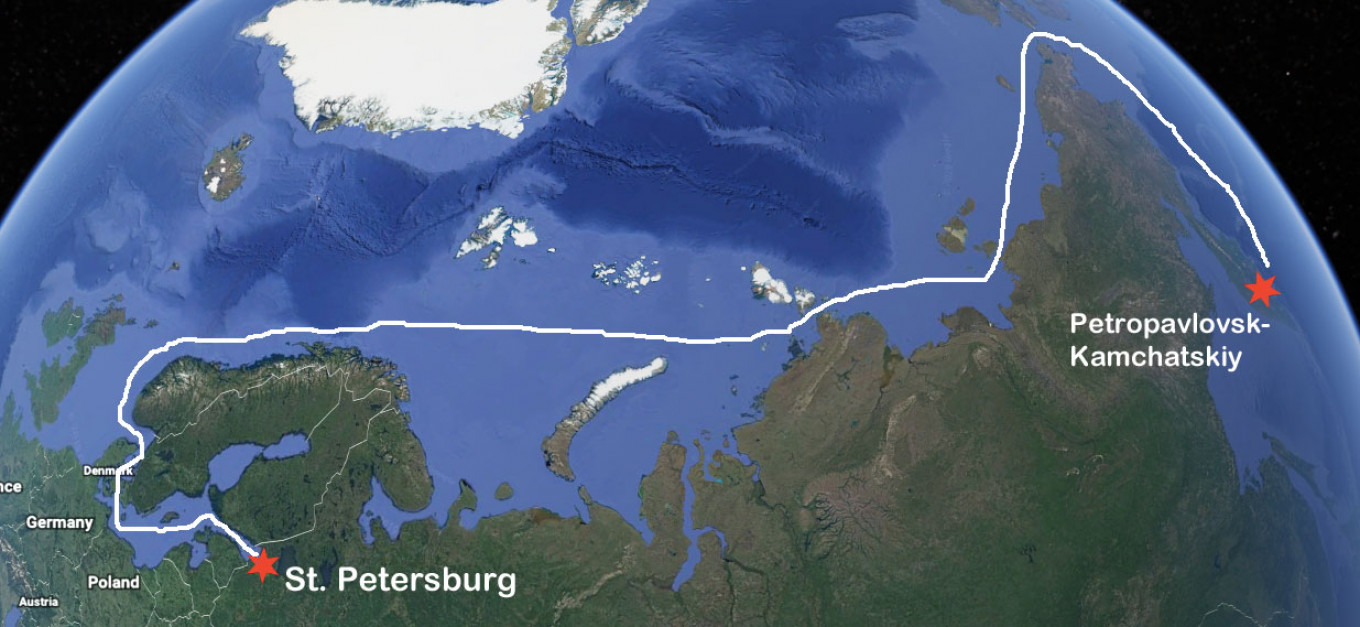The world’s only remaining civilian nuclear-powered cargo ship, the Sevmorput, is sailing south into the Norwegian Sea en route to St. Petersburg with 204 refrigerated containers of frozen fish from the Pacific aimed for the market in European Russia.
The ship will arrive in St. Petersburg by the end of this week after sailing south along the coast of Norway through the Great Belt in Denmark and into the Baltic Sea.
“It’s crucial for Rosatomflot to expand the geography of our work,” says Mustafa Kaskha, director of the Murmansk-based, state-owned fleet of nuclear-powered icebreakers.
This is the first time that Russia has sailed commercial cargo with a nuclear-powered vessel via the Arctic to St. Petersburg.
Sevmorput left port in Petropavlovsk-Kamchatkiy on Aug. 29, sailing along the Northern Sea Route before entering the Barents Sea on Sunday.
Russia informed Norwegian authorities about the coming cargo transport along the coast Norway, the head of the High North Section of the Radiation Protection Authority (NRPA) Inger Margrethe Eikelmann said.
“We will bring this issue to attention at our next meeting with the Russians and ask if this is something there will be more of in the future,” Eikelmann said.
Rosatomflot says there will be two voyages with seafood from Russia’s Pacific region via the Arctic to St. Petersburg this autumn, and if successful, this route will be regular starting from next year.
Eikelmann said that the increasing number of voyages with nuclear-powered vessels along the coast of Norway is something the agency is taking into consideration as Norway updates its nuclear emergency preparedness.
“We cooperate with Finland and other Nordic counties in regards to emergency preparedness projects with Russia,” she added.
Vladimir Ilyukhin, the governor of the Kamchatka region, hopes this will boost seafood shipping to the European part of Russia. “This test-voyage with the container carrier gives hope that such one-time deliveries will become regular.”

Research professor Arild Moe with the Fridtjof Nansen Institute in Oslo says that Sevmorput as an investment is unlikely to be profitable.
“It is difficult to say anything exact about the economics of its present operations, but a big part of costs are fixed in the construction and refurbishment,” Moe said, pointing the modernization of Sevmorput that was paid by the state.
Commissioned more than 30 years ago, the Sevmorput mainly stayed in port in Murmansk for two decades. In 2008, the ship was officially laid-up and in 2012 plans were presented to scrap it. In 2013, however, it was decided to renovate it and in autumn 2015 Sevmorput was again test-sailing in the Barents Sea.
“Given the substantial sums used for its resurrection, we should expect that it will be used in the coming years for various purposes, but not that more such ships will be built. This is not an icebreaker. Its advantage in operational terms is that it can be used over very long periods without refueling. It is part of Russia’s ambition to increase cargo traffic on the NSR, but not a key part,” Moe said.
Russia’s goal is to ship 80 million tons of cargo along the Northern Sea Route by 2024.
With granting permission to the nuclear-powered container ship to sail fish-product along the Northern Sea Route, Rosatom takes another stronghold on business development for Arctic Shipping.
The move comes after the state nuclear corporation in January 2019 was officially granted the leading role in the development of the Russian Arctic. The company that employs more than 250,000 people and engages in a multitude of activities related to nuclear power development and production became the management authority for the Northern Sea Route as President Vladimir Putin on Dec. 28 last year signed the law on the Northern Sea Route.
